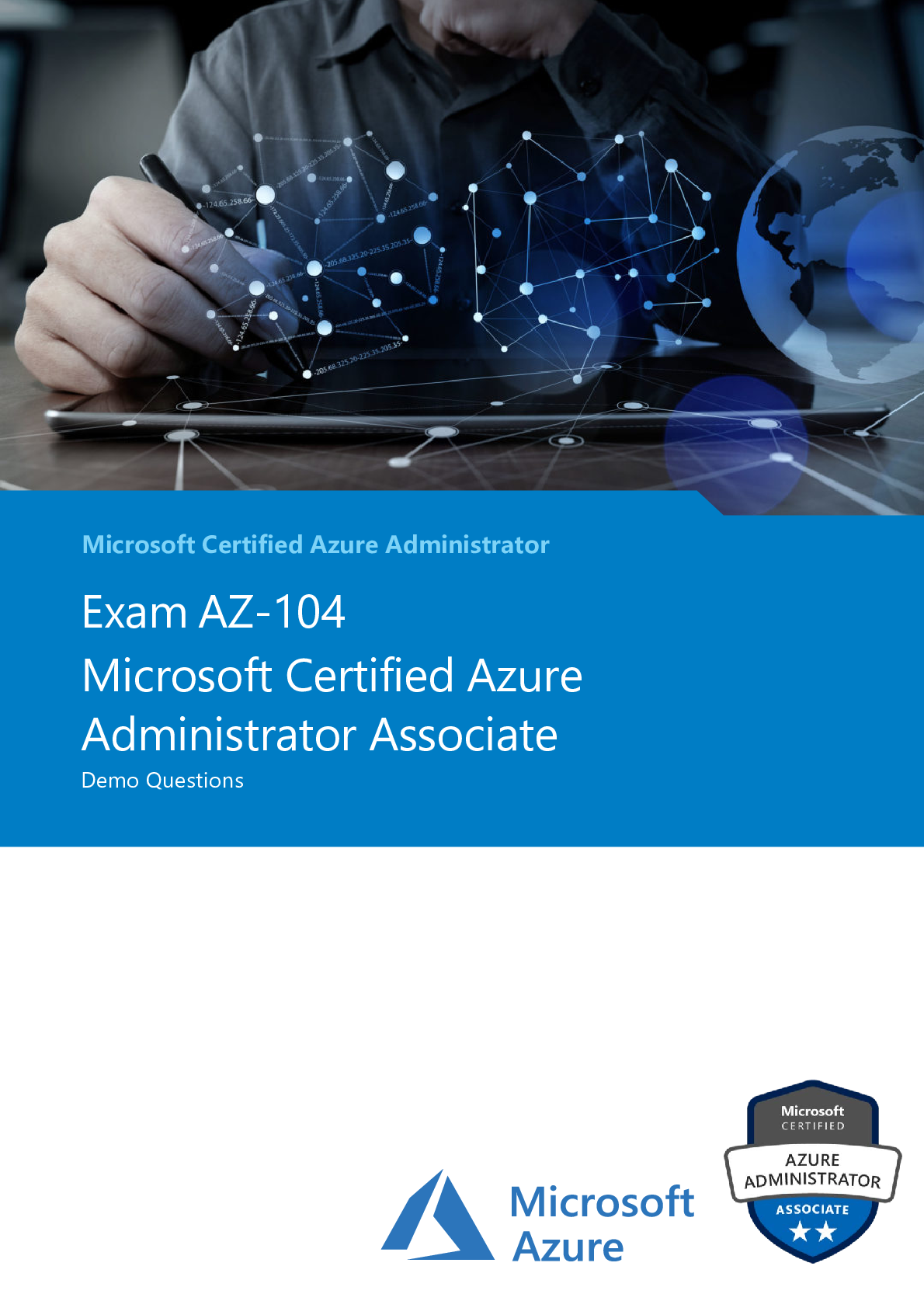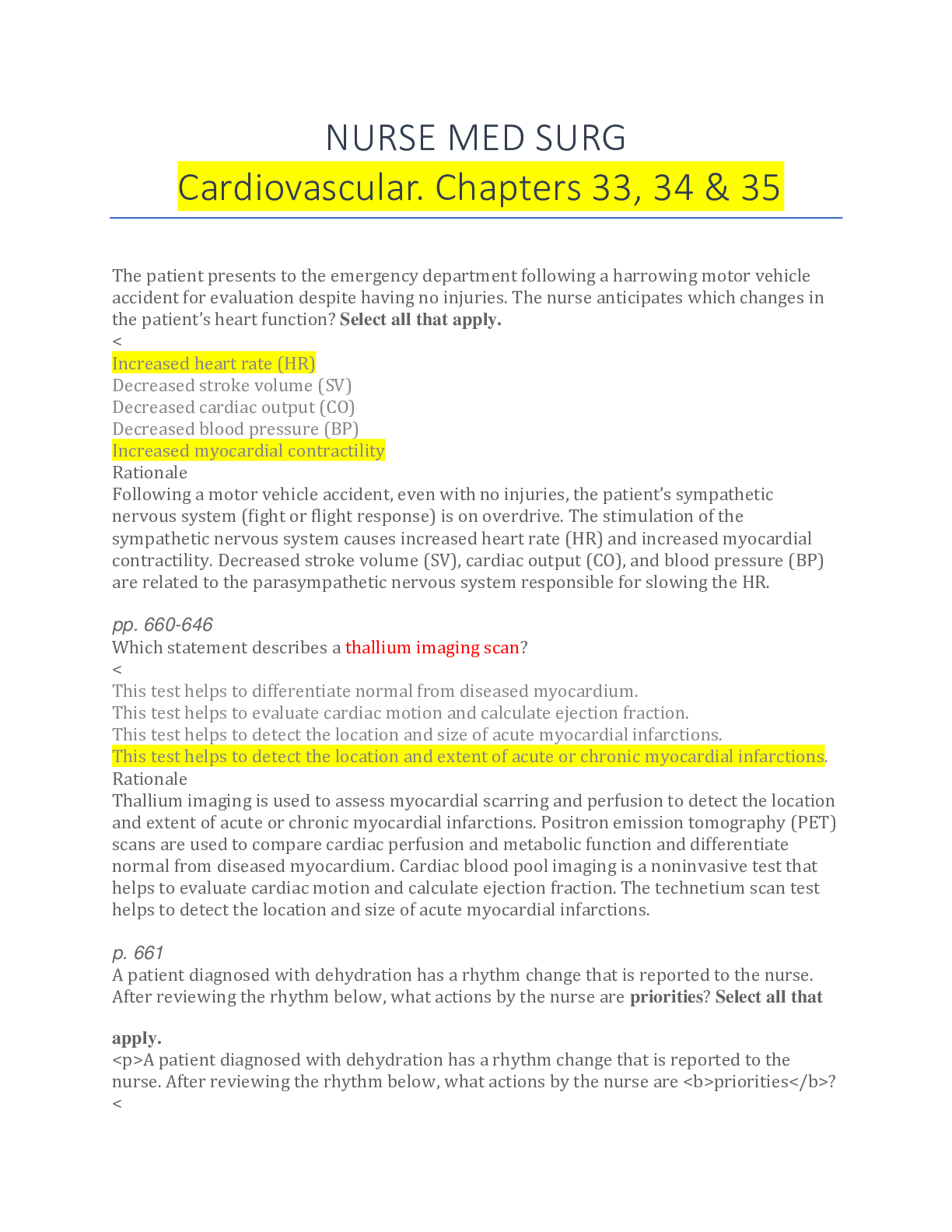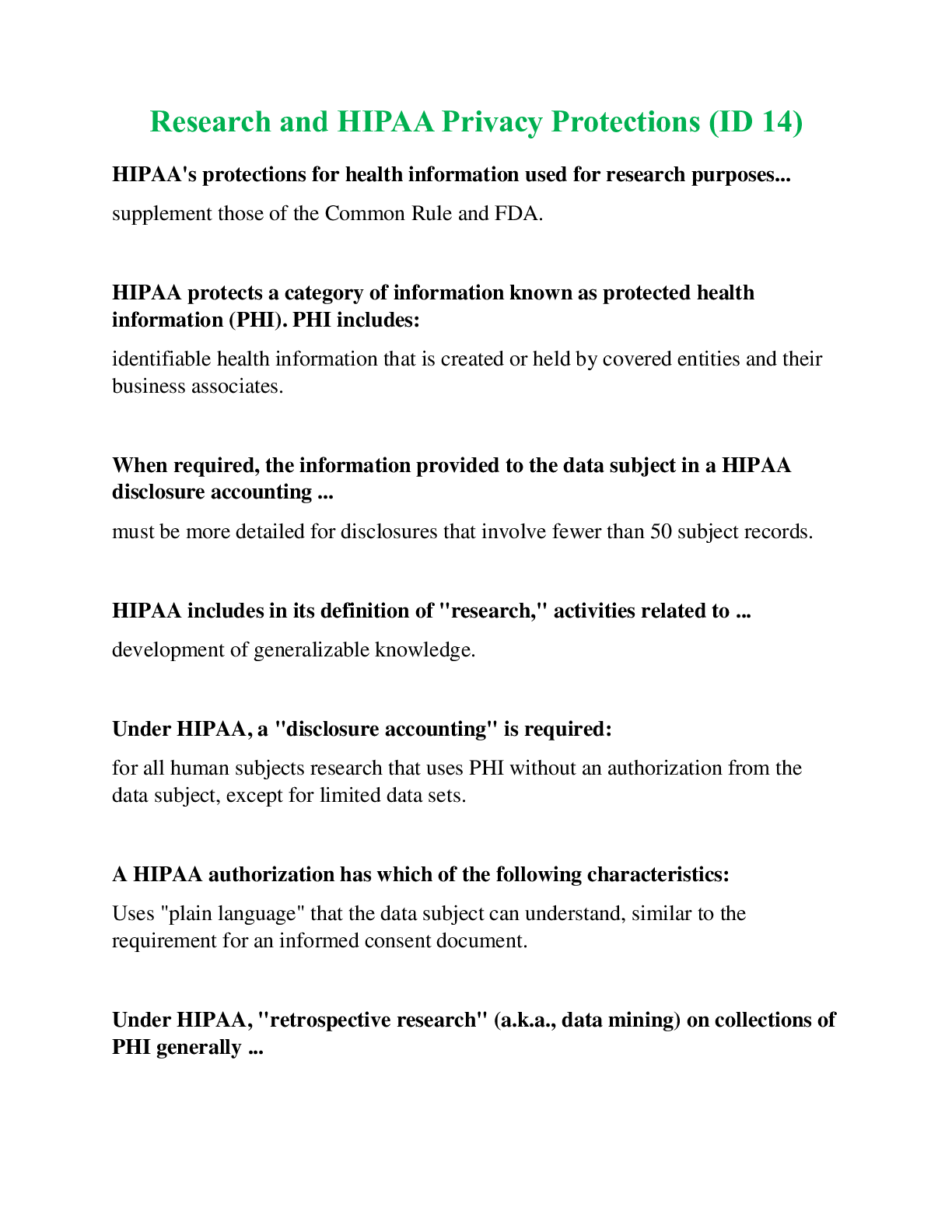*NURSING > QUESTIONS & ANSWERS > Chapter 22: Eating Disorders. With Answers Explained (All)
Chapter 22: Eating Disorders. With Answers Explained
Document Content and Description Below
Multiple Choice Identify the choice that best completes the statement or answers the question. ____ 1. Family dynamics are thought to be a major influence in the development of anorexia nervosa. W... hich statement regarding a client’s home environment should a nurse associate with the development of anorexia nervosa? 1. The home environment maintains loose personal boundaries. 2. The home environment places an overemphasis on food. 3. The home environment is overprotective and demands perfection. 4. The home environment condones corporal punishment. ____ 2. A client’s altered body image is evidenced by claims of “feeling fat,” even though the client is emaciated. Which is the appropriate outcome criterion for this client’s problem? 1. The client will consume adequate calories to sustain normal weight. 2. The client will cease strenuous exercise programs. 3. The client will perceive personal ideal body weight and shape as normal. 4. The client will not express a preoccupation with food. ____ 3. A nurse is counseling a client diagnosed with bulimia nervosa about the symptom of tooth enamel deterioration. Which explanation for this complication of bulimia nervosa should the nurse provide? 1. The emesis produced during purging is acidic and corrodes the tooth enamel. 2. Purging causes the depletion of dietary calcium. 3. Food is rapidly ingested without proper mastication. 4. Poor dental and oral hygiene leads to dental caries. ____ 4. A nurse is teaching a client diagnosed with an eating disorder about behavior-modification programs. Why is this intervention the treatment of choice? 1. It helps the client correct a distorted body image. 2. It addresses the underlying client anger. 3. It manages the client’s uncontrollable behaviors. 4. It allows clients to maintain control. ____ 5. A potential Olympic figure skater collapses during practice and is hospitalized for severe malnutrition. Anorexia nervosa is diagnosed. Which client statement best reflects insight related to this disorder? 1. “Skaters need to be thin to improve their daily performance.” 2. “All the skaters on the team are following an approved 1,200-calorie diet.” 3. “The exercise of skating reduces my appetite but improves my energy level.” 4. “I am angry at my mother. I can only get her approval when I win competitions.” ____ 6. The family of a client diagnosed with anorexia nervosa becomes defensive when the treatment team calls for a family meeting. Which is the appropriate nursing response? 1. “Tell me why this family meeting is causing you to be defensive. All clients are required to participate in two family sessions.” 2. “Eating disorders have been correlated to certain familial patterns; without addressing these, your child’s condition will not improve.” 3. “Family dynamics are not linked to eating disorders. The meeting is to provide your child with family support.” 4. “Clients diagnosed with anorexia nervosa are part of the family system, and any alteration in family processes needs to be addressed.” ____ 7. A client diagnosed with bulimia nervosa has been attending a mental health clinic for several months. Which factor should a nurse identify as an appropriate indicator of a positive client behavioral change? 1. The client gained two pounds in one week. 2. The client focused conversations on nutritious food. 3. The client demonstrated healthy coping mechanisms that decreased anxiety. 4. The client verbalized an understanding of the etiology of the disorder. ____ 8. The nurse is working with a client diagnosed with binge eating disorder. Which medication should the nurse expect to teach the client about? 1. Lisdexamfetamine (Vyvanse) 2. Dexfenfluramine (Redux) 3. Sibutramine (Meridia) 4. Pemoline (Cylert) ____ 9. A nurse is attempting to differentiate between the symptoms of anorexia nervosa and the symptoms of bulimia. Which statement delineates the difference between these two disorders? 1. Clients diagnosed with anorexia nervosa experience extreme nutritional deficits, whereas clients diagnosed with bulimia nervosa do not. 2. Clients diagnosed with bulimia nervosa experience amenorrhea, whereas clients diagnosed with anorexia nervosa do not. 3. Clients diagnosed with bulimia nervosa experience hypotension, edema, and lanugo, whereas clients diagnosed with anorexia nervosa do not. 4. Clients diagnosed with anorexia nervosa have eroded tooth enamel, whereas clients diagnosed with bulimia nervosa do not. ____ 10. A client diagnosed with a history of anorexia nervosa comes to an outpatient clinic after being medically cleared. The client states, “My parents watch me like a hawk and never let me out of their sight.” Which nursing diagnosis would take priority at this time? 1. Altered nutrition less than body requirements 2. Altered social interaction 3. Impaired verbal communication 4. Altered family processes Multiple Response Identify one or more choices that best complete the statement or answer the question. ____ 11. A nurse should identify topiramate (Topamax) as the drug of choice for which of the following conditions? (Select all that apply.) 1. Binge eating with a diagnosis of obesity 2. Bingeing and purging with a diagnosis of bulimia nervosa 3. Weight loss with a diagnosis of anorexia nervosa 4. Amenorrhea with a diagnosis of anorexia nervosa 5. Emaciation with a diagnosis of bulimia nervosa ____ 12. A nursing instructor is teaching about the DSM-5 criteria for the diagnosis of binge-eating disorder. Which of the following student statements indicates that further instruction is needed? (Select all that apply.) 1. “In this disorder, binge eating occurs exclusively during the course of bulimia nervosa.” 2. “In this disorder, binge eating occurs, on average, at least once a week for three months.” 3. “In this disorder, binge eating occurs, on average, at least two days a week for six months.” 4. “In this disorder, distress regarding binge eating is present.” 5. “In this disorder, distress regarding binge eating is absent.” Completion Complete each statement. 13. The diagnosis of __________________ ___________________includes the symptoms of gross distortion of body image, preoccupation with food, and refusal to eat. 14. The episodic, uncontrolled, compulsive, rapid ingestion of large quantities of food over a short period of time is termed ________________________. 15. To rid the body of excessive calories, a client diagnosed with bulimia nervosa may engage in ______________________ behaviors, which include self-induced vomiting, or the misuse of laxatives, diuretics, or enemas. [Show More]
Last updated: 1 year ago
Preview 1 out of 11 pages

Buy this document to get the full access instantly
Instant Download Access after purchase
Add to cartInstant download
We Accept:

Reviews( 0 )
$6.00
Document information
Connected school, study & course
About the document
Uploaded On
Jan 28, 2020
Number of pages
11
Written in
Additional information
This document has been written for:
Uploaded
Jan 28, 2020
Downloads
0
Views
92














